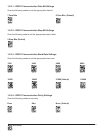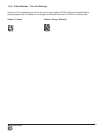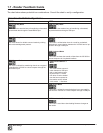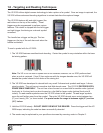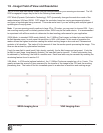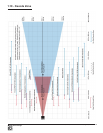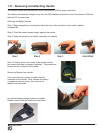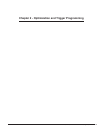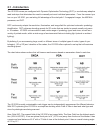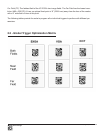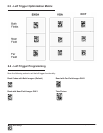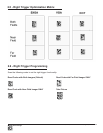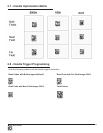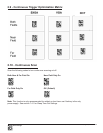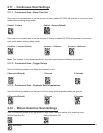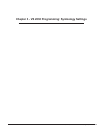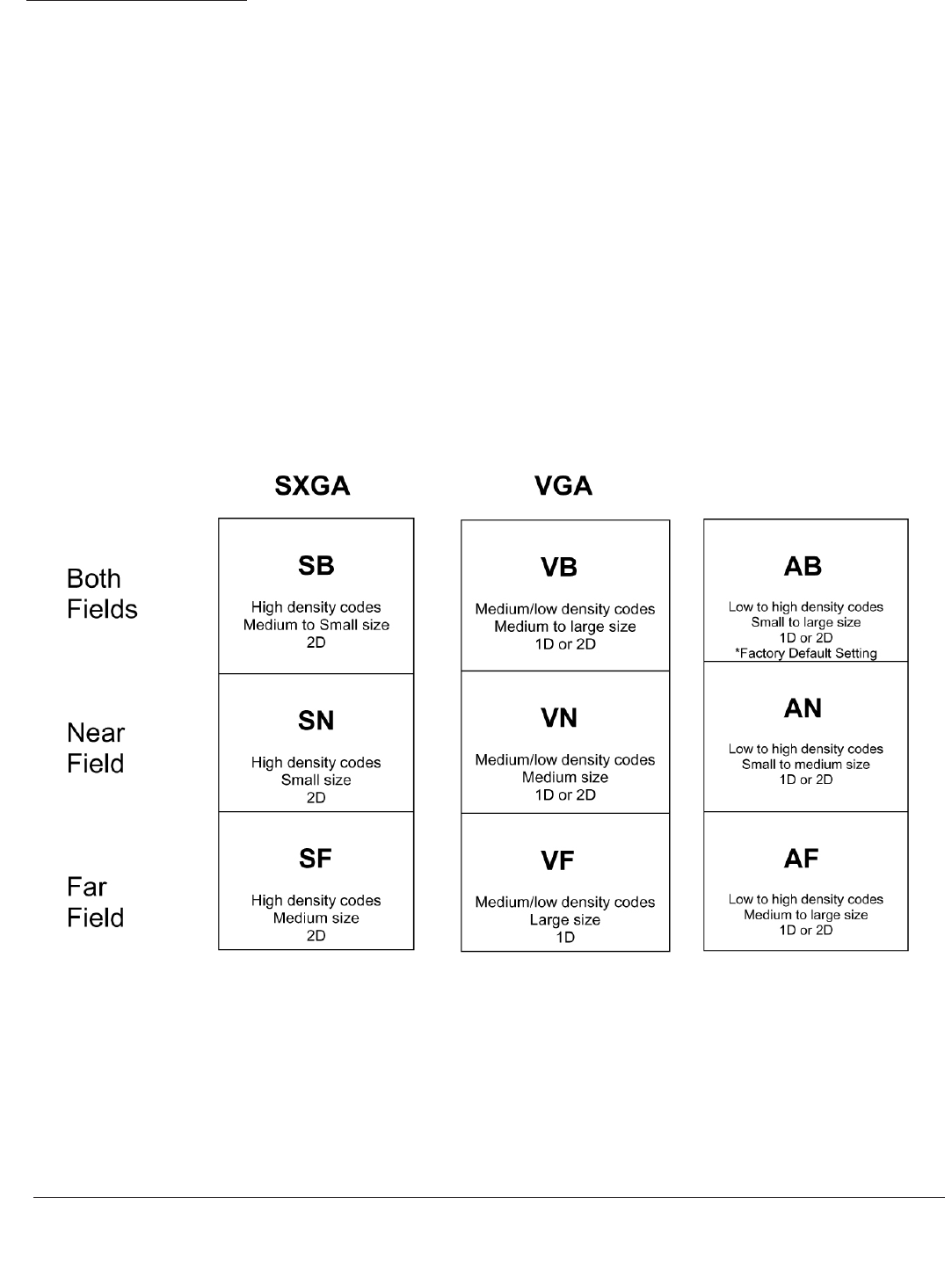
K11020 VisionSensor™ 2030 User Manual, Rev. E, Software ver. 3.1.1000, August 3, 2007 - 19
Save Settings
2.1 - Introduction
The VS 2030 comes pre-congured with Dynamic Optimization Technology (DOT), a revolutionary adaptive
read technique that eliminates the need to manually set most individual parameters. From the moment you
turn on your VS 2030, you are taking full advantage of the dual path 1.3 megapixel imager, the 400 MHz
processor, and DOT.
DOT continuously adapts the resolution, illumination, and image eld for optimized automatic symbology
identication. DOT achieves decoding speeds for 2D codes that are similar to speeds usually only seen
in 1D readers. VS 2030 units are able to read a wide range of symbology types and sizes, as well as a
variety of printed media, within a wide range of environmental factors including light (natural or ambient
lighting).
By dening if you are scanning large, small, or different sizes of multiple types of codes, types of sym-
bologies), (1D or 2D) and densities of the codes, the VS 2030 offers options for set up that will maximize
decoding speed.
The chart below shows options that will improve performance based on parameters listed in each box.
The VS 2030 is easily customizable; each trigger can be independently programmed for different behavior.
With DOT, optimizing the VS 2030 is as simple as deciding which Field of View is best and what type and
size of symbologies are being scanned.
Near Field (NF): The nearest eld of the VS 2030’s two image elds. The Near Field has the highest resolu-
tion (1024 x 640 DPI). It has an optimal focal point of 4” (101.6 mm) away from the lens of the reader. It has
a maximum focal distance of 8.5” with a 3” eld of view at the farthest point. It has an overall viewing angle
of 21º by 12 º.
DOT



